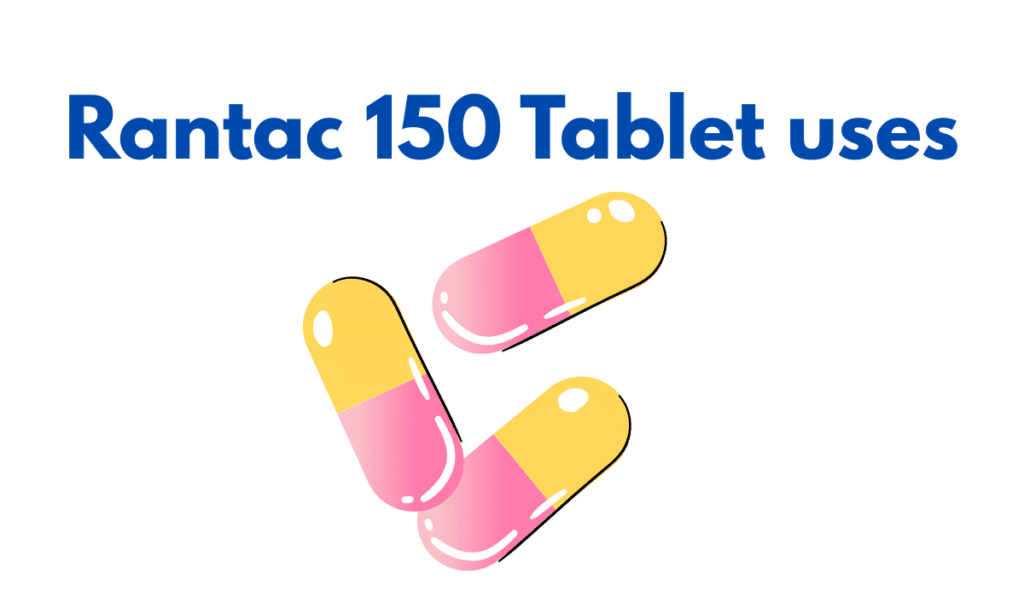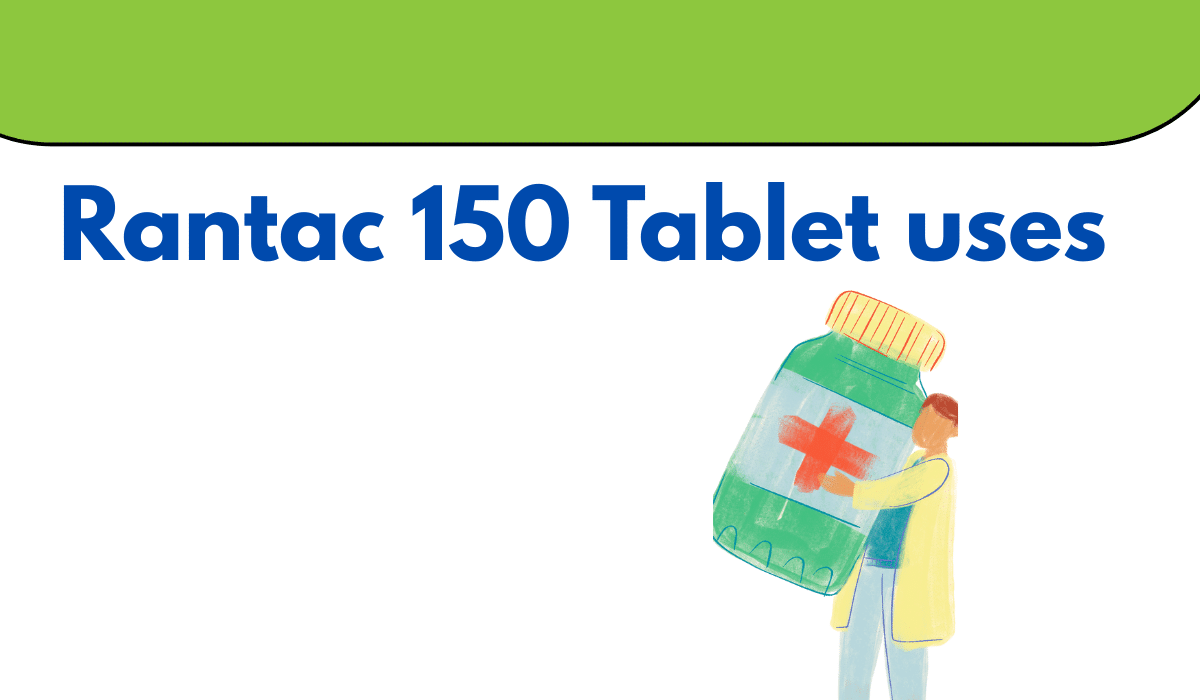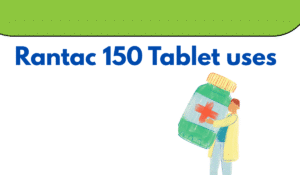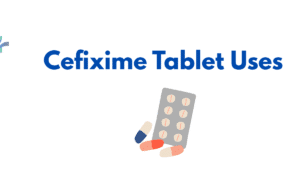Rantac 150 Tablet: The Unsung Guardian of Gastrointestinal Peace
Ever felt that caustic burn simmering up your chest post a sumptuous feast or sensed a sour tide creeping up your throat? You’re not the anomaly. Enter Rantac Tablet 150—a staple remedy tucked inside countless medicine cabinets, revered for quelling acid-induced mayhem. But how much do you truly fathom about this gastro-shield? What is Rantac 150 tablet used for? The answer lies below.
Venture with us into the intricacies of Rantac—its modus operandi, strategic administration, and the caveats nestled beneath its therapeutic allure.
What Exactly Is Rantac Tablet?
Rantac Tablet is the commercial moniker for Ranitidine—a pharmacological sentinel from the histamine-2 (H2) antagonist family. It deftly curbs your stomach’s acid churn, granting solace to a tempestuous digestive tract. A go-to elixir for a panoply of acid-linked afflictions, this tablet embodies relief in compact form. Can we use Rantac for gas? Absolutely, it’s often turned to for relief from gastric discomfort.

Rantac’s Molecular Composition
Within each tablet resides:
- Ranitidine Hydrochloride (commonly available in 150 mg or 300 mg doses)
- What is the use of Rantac 300 tablet? It’s primarily used to manage ulcers, GERD, and excess acid secretion.
Spectrum of Formulations and Potency
- Oral Tablets: 150 mg / 300 mg
- Syrup: Primed for pediatric palates
- Injectable Variant: Reserved for acute, clinical scenarios
Mechanism of Action: How Rantac Wields Its Power
Rantac maneuvers by throttling histamine-2 receptors embedded in the gastric mucosa. These receptors, when left unchecked, incite an acid frenzy. By barricading their signal, Rantac orchestrates a drastic downturn in acid excretion, allowing scorched tissue to mend and fending off future flare-ups. Is Rantac a painkiller? No, it is not—it’s an acid suppressant, not an analgesic.
Therapeutic Realms Where Rantac Prevails
Heartburn Rescue
When culinary adventures end in acidic regret, Rantac stands as a frontline fire-extinguisher, extinguishing that fiery reflux with poise.
Acid Reflux / GERD Sentry
In the realm of GERD (gastroesophageal reflux disease), where stomach acids insidiously flow upward, Rantac dials down the acid, making the esophagus a less hostile battleground. Can Rantac be taken on an empty stomach? Yes, particularly before meals to maximize effectiveness.
Ulcer Regenerator
Be it gastric or duodenal ulcers, Rantac’s acid-dampening abilities provide the foundation for healing and restoration of mucosal integrity.
NSAID-Linked Ulcer Shield
NSAIDs like ibuprofen can covertly gnaw at your stomach lining. Rantac is often co-prescribed to act as a biochemical bodyguard, shielding against these inflammatory agents.
Zollinger-Ellison Syndrome
Though rarefied, this syndrome triggers hyperactive acid glands due to tumors. Rantac offers a chemical leash to tame the overproduction.
Uncommon Yet Noteworthy Applications
Functional Dyspepsia
For those with enigmatic indigestion tied to acid dysfunction, Rantac brings subtle but significant relief. Is Rantac D good for gas? It is often used in combination with domperidone for gas and bloating.
Nausea from Acid Overload
When the gut’s acidic turmoil translates to queasiness or emesis, Rantac helps recalibrate the gastric equilibrium.
Supportive Role in H. pylori Battles
Occasionally recruited in regimens targeting Helicobacter pylori, Rantac acts as an acid-buffering ally alongside antibiotics.
Dosing Doctrine and Administration Wisdom
Adults:
- For ulcers or GERD: 150 mg twice daily or 300 mg once before slumber (When should Rantac 150 be taken? Typically before bedtime or as prescribed.)
- For episodic heartburn: 75–150 mg as necessity dictates
Children:
Pediatric use demands strict dosage tailoring, governed by weight and diagnostic specifics. Always consult a specialist. Is Rantac kid-friendly? Yes—but under medical supervision only.
Consumption Guidelines:
- Can be swallowed with or sans meals
- For proactive heartburn control, imbibing 30 minutes before meals enhances efficacy
- Can Rantac be taken on an empty stomach? Yes, ideally before meals for better acid control.
Rantac Tablet: Quick Overview Table
| Feature | Details |
| Brand Name | Rantac |
| Generic Name | Ranitidine Hydrochloride |
| Available Strengths | 150 mg, 300 mg |
| Forms Available | Tablet, Syrup, Injectable |
| Main Uses | Heartburn, GERD, Ulcers, NSAID Protection, Zollinger-Ellison Syndrome |
| Can be used for gas? | Yes, often used for gas-related discomfort |
| Dosage for Adults | 150 mg twice daily or 300 mg once at bedtime |
| Can be taken on an empty stomach? | Yes, especially 30 minutes before meals |
| Used in children? | Yes, with pediatric supervision |
| Pregnancy Category | Category B (consult doctor) |
| Lactation Safety | Minimal excretion in breast milk (consult doctor) |
| Common Side Effects | Headache, constipation, dizziness, fatigue |
| Serious Side Effects | Jaundice, irregular heartbeat, breathing issues |
| Is it a painkiller? | No |
| Constipation risk? | Yes, possible side effect |
| Interactions | Usually safe, but disclose all medications |
| Storage | Room temperature (20–25°C), dry and cool place |
| Alternative Medicines | Famotidine, Omeprazole, Pantoprazole, Pan D |
| Are Rantac and Pan D the same? | No, they work differently |
Usage During Gestation and Lactation
While historical data places Rantac under Category B for pregnancy—implying animal safety without robust human data—prudence is paramount. Let a physician navigate the decision. In lactation scenarios, minuscule traces may find their way into breast milk. Medical clearance remains non-negotiable.
Rantac’s Side Effect Spectrum
Common Disruptions:
- Cranial discomfort
- Bowel irregularities (constipation or laxity)
- Lightheadedness
- Exhaustion without cause
Does Rantac 150 cause constipation? Yes, it may lead to constipation in some individuals.
Grave Adverse Events:
- Jaundice-like symptoms (yellowish hue in skin/eyes)
- Unnaturally darkened urine
- Heart rhythm aberrations
- Respiratory difficulty
What are the side effects of the tablet Rantac 150? These range from mild digestive issues to rare but serious complications.
Urgency Signals:
Should symptoms such as chest constriction, disorientation, or severe allergic reactions surface—halt usage and seek emergency intervention.
Warnings and Precautionary Measures
- Abstain from alcohol, lest it diminishes Rantac’s efficacy or worsens symptoms
- Individuals grappling with hepatic or renal insufficiencies may require dose refinement
- Is Rantac 150 safe for kidneys? It’s generally safe but must be used cautiously in those with kidney issues
- Transparency with your healthcare provider is crucial—disclose all medications, herbal concoctions, and supplements
Rantac Substitutes and Safer Successors
Post its recall in several locales due to contaminant concerns, alternatives have emerged:
- Famotidine (Pepcid): A sibling H2 antagonist
- PPIs (Proton Pump Inhibitors): Omeprazole, Pantoprazole, etc.—with deeper acid suppression (Which tablet is best for gastric problems? PPIs and H2 blockers both offer strong relief depending on the condition.)
- Herbal Soothers: Ginger decoctions, aloe-based elixirs, or deglycyrrhizinated licorice (DGL)
Are Rantac and Pan D the same? No, Pan D contains a PPI and a prokinetic agent, while Rantac is an H2 blocker.
Is Rantac 150 and Pan D the same? They’re used for similar issues but are chemically different.
Lifestyle Modifications for Acidic Troubles
- Opt for modest, frequent meals over banquet-style feasts
- Steer clear of peppery and greasy indulgences
- Avoid reclining post-meal
- Elevate your upper body during sleep
- Cultivate an active routine and aim for weight stability
Storage Stratagems
- Maintain at ambient room temperature (20–25°C / 68–77°F)
- Shield from moisture intrusions and solar glare
- Lock away from curious little hands
Rantac FAQs Unveiled
- Is Rantac still on pharmacy shelves?
In select regions, it has vanished due to safety purges. Always consult your pharmacist or clinician. - Is daily Rantac ingestion acceptable?
Only under the vigilant eyes of a prescriber. Prolonged usage demands surveillance. - Is Rantac kid-friendly?
Yes—but only under pediatric supervision. Dosage precision is vital. - Can Rantac cohabit with other drugs?
Typically, yes. Nonetheless, disclose your regimen to sidestep adverse interactions. - Skipped a dose—what now?
Take it promptly unless it’s almost time for the next. Doubling doses is ill-advised.
Summative Thoughts
Rantac Tablet has long stood as a vigilant ally against the fiery chaos of stomach acid. From the common woes of heartburn to the rarer perils of ulcerations, it has delivered comfort in countless instances. Yet, it is not without scrutiny—recent safety examinations demand we approach it with both gratitude and caution.
What is the benefit of Rantac? Relief from acid, healing ulcers, and managing reflux are key advantages.
Understand its roles, respect its limits, and consult the wise (your doctor). With this knowledge in hand, you’re far better equipped to navigate the turbulent waters of digestive health







